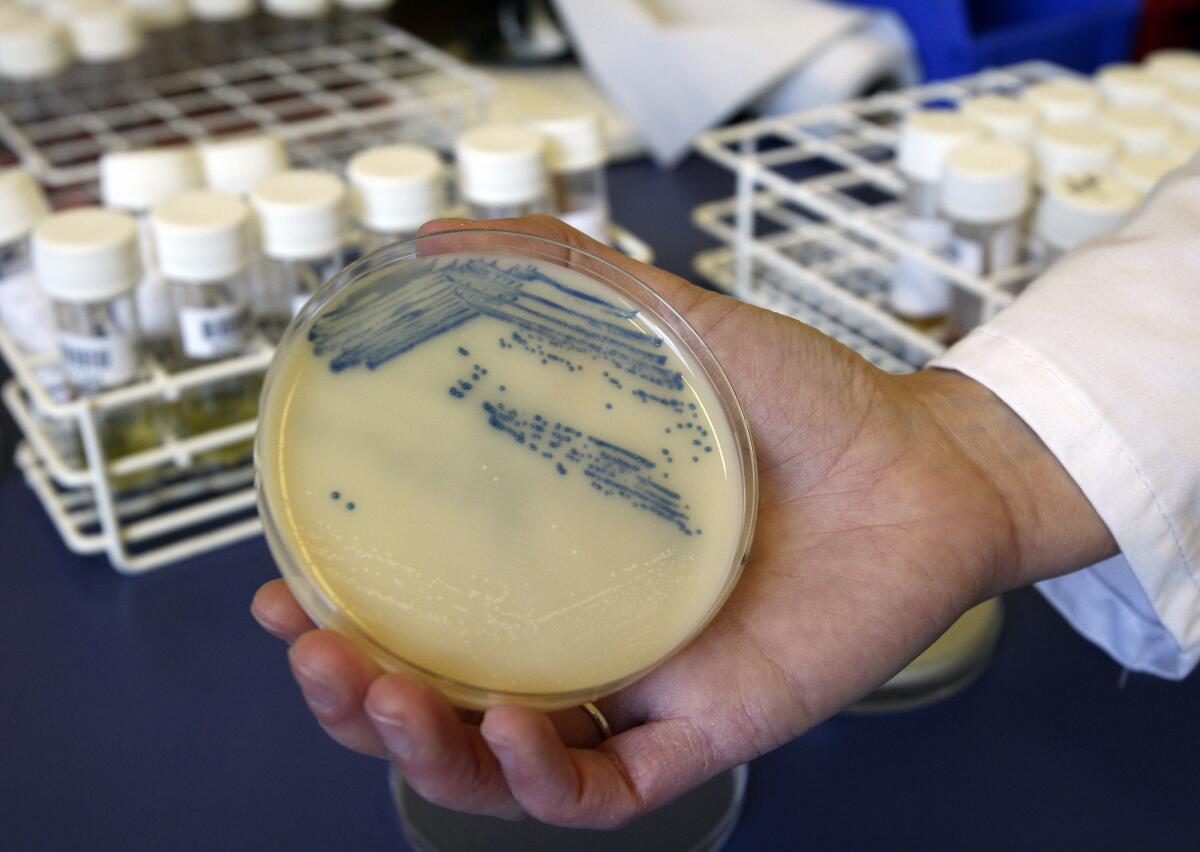
Since the dawn of the antibiotic age, opportunistic pathogens have evolved defenses faster than humans can develop drugs to combat them.
At the same time, humans have unwittingly given the bugs an advantage through the overuse of antibiotics, allowing pathogens that survive their exposure to pass on their resistant traits.
Now, a new report finds that unless officials take action to develop new medications, “superbug” infections could kill nearly 2 million people a year in 2050 — a 67.5% increase from the 1.14 million lives lost this way in 2021.
An additional 8.22 million will die of causes related to those infections in 2050, according to a study from the Global Research on Antimicrobial Resistance Project published this week in the Lancet, a medical journal.
GRAM is a joint project of the University of Oxford and the University of Washington School of Medicine’s Institute for Health Metrics and Evaluation. The report is the most comprehensive assessment yet of the risk of antimicrobial resistance, or AMR, which the World Health Organization has long identified as one of the top 10 threats to global public health.
It was released in advance of a United Nations General Assembly meeting later this month on drug-resistant pathogens.
“The numbers in the Lancet paper represent a staggering and unacceptable level of human suffering,” said Henry Skinner, chief executive of the AMR Action Fund, a public-private partnership that invests in new antibiotic development, who was not involved in the study. “A continued failure of governments to meet their moral obligations to protect and care for their people, as this paper shows, will doom millions of people to needless deaths.”
Roughly two-thirds of AMR deaths in 2050 will be among people ages 70 years or older, the report estimated. Older people are already at greater risk for drug-resistant infections, which are often acquired in hospitals and care facilities.
Between 1990 and 2021, the report noted, deaths due to AMR increased by more than 80% for people ages 70 and older.
Across all ages, the mortality rate from resistant pathogens is projected to be highest in South Asia, Latin America and the Caribbean.
New antibiotic development has been painfully slow, especially when compared with drugs with better financial incentives for producers. Vital as they are, antibiotics aren’t meant to be taken over the long term like medications for chronic conditions. The most powerful have to be used as rarely as possible, to give bacteria fewer opportunities to develop resistance.
In June, the World Health Organization warned that far too few new antibiotics are currently in the global development pipeline, and the ones that are there fall far short of the innovation required to vanquish the most dangerous microbes.
Of the 32 antibiotics under development against bugs on the WHO’s 2024 bacterial priority pathogen list, the organization noted, only 12 took nontraditional approaches, which is vital for staving off the rise of drug resistance. And of those 12, only four were active against pathogens that WHO identified as the most critical threat to public health.
The scenario laid out in the GRAM report is grim, its authors noted, but not inevitable. Improvements in vaccine distribution and access to clean drinking water and sanitation have helped halve AMR-related deaths among children younger than 5 between 1990 and 2021, even as superbugs proliferated.
With better infection control measures and accelerated drug development, the report found, up to 92 million lives could be saved between 2025 and 2050.
“The data shows that if we take action toward better stewardship practices, improved access in low- and middle-income countries, and new investments to bolster the antibiotic pipeline, then we can save tens of millions of lives,” said James Anderson, chair of the AMR Industry Alliance.